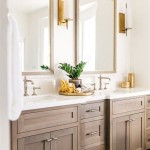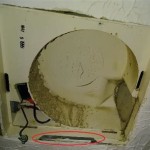Bathroom Splashback Tiles: Elevating Aesthetics and Protection
Bathroom splashback tiles are an essential element in modern bathroom design, serving both a functional and aesthetic purpose. Strategically placed around sinks, showers, and bathtubs, they protect walls from water damage while simultaneously enhancing the overall visual appeal of the space. With a vast array of materials, colors, patterns, and textures available, selecting the right splashback tiles can transform a mundane bathroom into a stylish and personalized retreat.
The primary function of a bathroom splashback is to shield the wall surface from constant exposure to water and humidity. Prolonged moisture can lead to the growth of mold and mildew, potentially causing structural damage and health problems. Tiles, especially those made from impervious materials like ceramic, porcelain, and glass, create a waterproof barrier that effectively prevents water penetration. This protection is particularly crucial in areas prone to frequent splashing, such as behind the sink and within the shower enclosure.
Beyond their protective qualities, splashback tiles offer a significant opportunity to inject personality and style into the bathroom. They can be used to create a focal point, complement existing fixtures, or add a touch of color and texture to an otherwise plain space. The design possibilities are virtually limitless, allowing homeowners to express their individual tastes and preferences.
Understanding Tile Materials and Their Properties
The choice of material is a critical factor when selecting bathroom splashback tiles. Each material possesses unique characteristics that affect its durability, water resistance, aesthetics, and maintenance requirements. Understanding these differences is essential for making an informed decision that suits both the practical needs and the desired aesthetic of the bathroom.
Ceramic Tiles: Ceramic tiles are a popular and cost-effective option for bathroom splashbacks. They are relatively easy to install, highly durable, and resistant to water and stains. Ceramic tiles come in a wide variety of colors, sizes, and patterns, offering versatility in design. They are generally suitable for most bathroom applications, especially in areas with moderate water exposure. However, it's important to choose ceramic tiles with a glazed finish to ensure maximum water resistance. Porous, unglazed ceramic tiles may require sealing to prevent water absorption.
Porcelain Tiles: Porcelain tiles are a denser and more durable alternative to ceramic tiles. They are fired at higher temperatures, resulting in a less porous material that is highly resistant to water, stains, and scratches. Porcelain tiles are also more resistant to temperature changes, making them suitable for use in areas with fluctuating humidity levels. They are available in a wide range of styles, including those that mimic natural stone, wood, and concrete. Although typically more expensive than ceramic tiles, porcelain offers superior performance and longevity, making them a worthwhile investment for high-traffic bathrooms.
Glass Tiles: Glass tiles offer a sleek and modern aesthetic to any bathroom. They are non-porous, making them inherently resistant to water and stains. Glass tiles are also highly reflective, which can help to brighten up the space and create a sense of openness. They are available in a variety of colors, shapes, and sizes, including mosaic patterns and large-format tiles. However, glass tiles can be more expensive than ceramic or porcelain tiles, and they may require specialized installation techniques. It's also important to note that glass tiles can be prone to scratching, so they may not be the best choice for high-traffic areas.
Natural Stone Tiles: Natural stone tiles, such as marble, granite, and travertine, offer a luxurious and sophisticated look to the bathroom. Each stone tile is unique, with variations in color, pattern, and texture that add character and depth to the space. Natural stone tiles are durable and long-lasting, but they are also porous and susceptible to staining and water damage. They require regular sealing to maintain their appearance and prevent water absorption. Natural stone tiles are generally more expensive than other tile options, and they may require professional installation.
Metal Tiles: Metal tiles, typically made from stainless steel, copper, or brass, offer a contemporary and industrial aesthetic. They are highly durable, water-resistant, and easy to clean. Metal tiles can add a touch of glamour and sophistication to the bathroom, especially when used as accent pieces. They are available in a variety of finishes, including brushed, polished, and hammered. However, metal tiles can be expensive, and they may require specialized installation techniques. They can also be prone to scratching and tarnishing, so regular maintenance is required to keep them looking their best.
Exploring Design Styles and Patterns
Once the material is chosen, the next step is to consider the design style and pattern of the splashback tiles. The choice of design can significantly impact the overall look and feel of the bathroom, influencing the perception of space, light, and style. There are numerous design options to consider, ranging from classic and traditional to modern and contemporary.
Subway Tiles: Subway tiles are a classic and timeless choice for bathroom splashbacks. Their rectangular shape and simple design make them versatile and adaptable to various design styles. Subway tiles are typically installed in a horizontal brick pattern, but they can also be arranged in vertical stacks, herringbone patterns, or other creative layouts. They are available in a wide range of colors, from classic white to bold and vibrant hues, allowing homeowners to customize the look to their preferences.
Mosaic Tiles: Mosaic tiles are small tiles arranged in a decorative pattern or image. They are a great way to add texture, color, and visual interest to a bathroom splashback. Mosaic tiles are available in a variety of materials, including glass, ceramic, porcelain, and natural stone. They can be used to create intricate designs, geometric patterns, or abstract artwork. Mosaic tiles are particularly well-suited for small spaces, as they can add detail and visual appeal without overwhelming the room.
Geometric Patterns: Geometric patterns, such as hexagons, chevrons, and triangles, are a popular choice for modern bathroom splashbacks. These patterns add a contemporary and eye-catching element to the space. Geometric tiles can be installed in a single color or a combination of colors to create a dynamic and visually engaging design. They are particularly well-suited for minimalist bathrooms, as they add a touch of personality without cluttering the space.
Herringbone Pattern: The herringbone pattern is a classic and sophisticated design that adds a touch of elegance to the bathroom. It involves arranging rectangular tiles in a staggered zigzag pattern, creating a visually appealing and dynamic effect. The herringbone pattern can be created using various tile materials and colors, allowing homeowners to customize the look to their preferences. It is particularly well-suited for adding a touch of luxury to a master bathroom or powder room.
Patterned Tiles: Patterned tiles offer a wide range of design options, from floral motifs and arabesque designs to geometric patterns and abstract artwork. They can be used to create a bold and unique statement in the bathroom. Patterned tiles are particularly well-suited for adding personality and character to a neutral-colored bathroom. They are available in a variety of materials and sizes, allowing homeowners to choose the perfect pattern to complement their existing decor.
Large-Format Tiles: Large-format tiles are gaining popularity for bathroom splashbacks due to their sleek and modern appearance. Their large size minimizes grout lines, creating a seamless and contemporary look. Large-format tiles are available in various materials, including porcelain, ceramic, and natural stone. They are particularly well-suited for creating a minimalist and streamlined aesthetic.
Considering Practical Aspects and Installation
Beyond aesthetics, several practical aspects must be considered when choosing and installing bathroom splashback tiles. These factors include the size and layout of the bathroom, the level of water exposure, and the ease of maintenance. Proper planning and installation are crucial for ensuring the long-term performance and appearance of the splashback tiles.
Size and Layout: The size and layout of the bathroom will influence the choice of tile size and pattern. In small bathrooms, smaller tiles or mosaic patterns can help to create a sense of visual interest without overwhelming the space. In larger bathrooms, larger tiles or bold patterns can be used to create a dramatic statement. It's also important to consider the placement of fixtures and fittings, such as sinks, toilets, and showers, when planning the layout of the splashback tiles.
Water Exposure: The level of water exposure will determine the type of tile material that is most suitable. In areas with high water exposure, such as inside the shower enclosure, non-porous materials like porcelain, glass, or sealed natural stone are recommended. In areas with moderate water exposure, such as behind the sink, ceramic tiles or lightly sealed natural stone may be sufficient.
Grout Selection and Application: Grout is an essential component of a tiled splashback, filling the gaps between tiles and providing a waterproof seal. Choosing the right grout color and type is crucial for achieving the desired aesthetic and ensuring long-term performance. Epoxy grout is highly resistant to water, stains, and mildew, making it an excellent choice for bathroom splashbacks. It is also more durable than cement-based grout. Grout lines should be properly sealed to prevent water penetration and staining.
Installation Techniques: Proper installation is essential for ensuring the long-term performance and appearance of the splashback tiles. It is recommended to hire a professional tile installer to ensure that the tiles are properly aligned, leveled, and grouted. The installer should also prepare the wall surface by cleaning and leveling it before applying the tiles. In areas with high water exposure, a waterproof membrane should be installed behind the tiles to provide an additional layer of protection.
Maintenance and Cleaning: Regular maintenance and cleaning are essential for keeping the splashback tiles looking their best. Tiles should be cleaned regularly with a mild detergent and water. Avoid using abrasive cleaners or scouring pads, as they can damage the tile surface. Grout lines should be cleaned regularly with a grout brush and a specialized grout cleaner. Sealing natural stone tiles regularly is crucial to prevent staining and water damage.
By carefully considering these factors, homeowners can create a bathroom splashback that is both functional and aesthetically pleasing, enhancing the beauty and durability of their bathroom for years to come. The choices are vast, allowing for a truly personalized expression of style and a haven within the home.

6 Bathroom Splashback Designs That Are Bang On Trend For 2024 Goodhomes

Splashback Tile Ideas And Bath Co

Bathroom Tile Ideas For Small Bathrooms

6 Bathroom Splashback Designs That Are Bang On Trend For 2024 Goodhomes

22 Fabulous Bathroom Tile Ideas To Inspire Your Next Home Update

62 Bathroom Backsplash Ideas For A Stylish Makeover Remodel Tile Vanity

Tile Ideas Designs For Bathrooms Kitchens More

Do You Need A Splashback Behind Bathroom Sink

22 Fabulous Bathroom Tile Ideas To Inspire Your Next Home Update

Cloakroom Wall Tile Ideas
Related Posts







